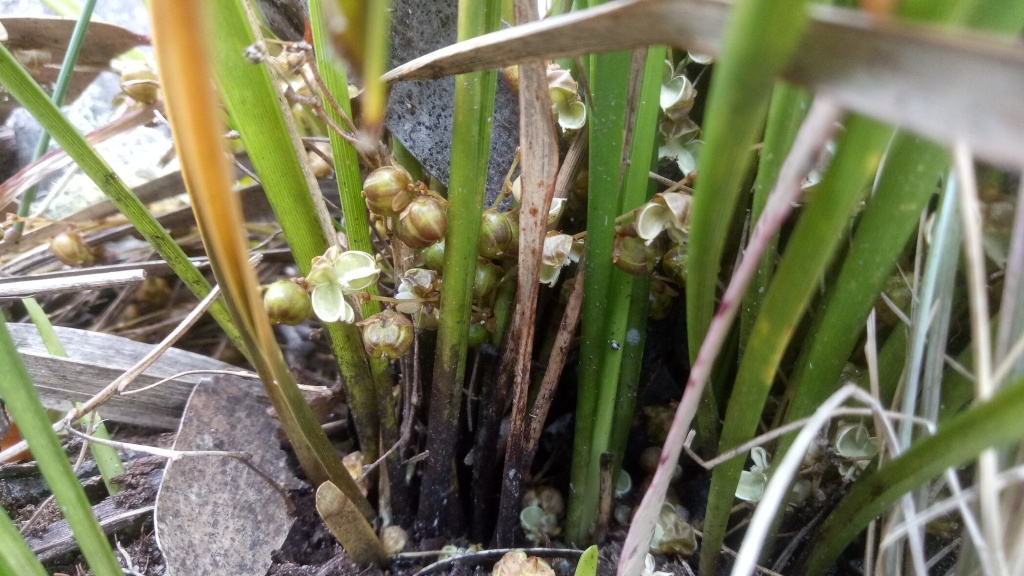Lomandra oreophila
B.J.Conn & QuiricoTussocks usually slender, occasionally clump-forming. Leaves stiff and erect, 25–50 cm long, (2.5–)3.3–4(–6) mm wide, glabrous, flat with margin usually ± incurved, slightly concavo-convex in cross-section, not or barely twisted; margins thickened, smooth to minutely scabrous; basal sheath with margin intact or occasionally slightly torn, 4–6 cm long; apex rounded or with two obscure, small lateral teeth. Inflorescences usually much-branched, c. one-quarter to two-thirds as long as leaves, with non-flowering axis hidden or exposed; axes conspicuously covered with tubercles to c. 0.1 mm long. Male inflorescences 14–30 cm long; female inflorescences similar to male but 7–21 cm long. Male flowers with tepals 1.9–2.6 mm long; female flowers with tepals 3–4.5 mm long. Fruit ovoid, c. 3 mm diam., pale brown. Flowers Oct.–Jan.
EGU, HSF, MonT, VAlp. Apparently endemic to Victoria. Scattered, but locally rather common in subalpine Eucalyptus pauciflora woodlands in the Mt Wellington, Mt Howitt, Mt Speculation areas, with an outlying occurrence near the NSW border at Mt Tingaringy.
Possibly overlooked due to its similarity to Lomandra longifolia with which it occurs through much of its range.
Conn, B.J. (1994). Xanthorrhoeaceae. In: Walsh, N.G.; Entwisle, T.J., Flora of Victoria Vol. 2, Ferns and Allied Plants, Conifers and Monocotyledons, pp. 720–734. Inkata Press, Melbourne.
 Spinning
Spinning